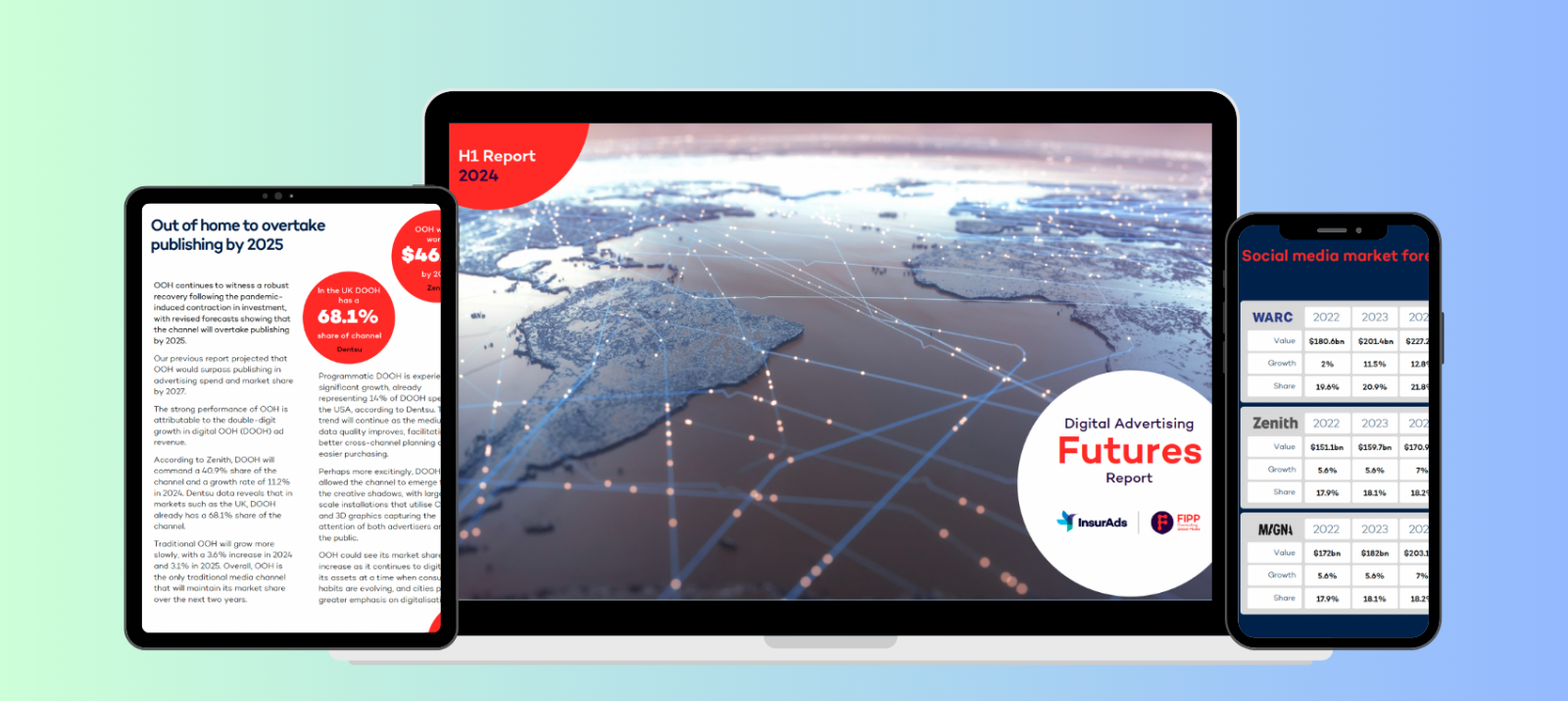Size matters: How the Big Five are dominating global ad expenditure
You wait an age for a big event and then a bunch come along in one year. The Paris Olympics, EUFA Euro 2024 and some key elections are all combining in 2024 to help boost ad spend growth – the latest Digital Advertising Futures report forecasting investment is set to increase by 6.2% this year. Go behind the figures, though, and you spot an elephant in the room. In fact, you spot five.
The study, done in partnership with InsurAds, reveals the top five tech companies in the world – Alphabet, Meta, Amazon, Alibaba, and Bytedance – now command 50% of the global advertising spend. Some estimates put Alphabet, Meta and Amazon’s share of digital outside of China as high as 90%.
Alphabet ($260 billion) is outpacing the combined revenue of television, newspapers, magazines, radio and cinema ($252 billion), while Meta ($140 billion) and Amazon ($48.9 billion) are both doing better than magazines and newspapers ($46.3 billion).
Agencies, including Magna and WARC, estimate that digital pure-plays now command more than two-thirds of global ad spend, and this share is further dominated by a handful of big technology companies.
According to Magna, digital pure plays have a 69% market share and that Google, Meta and Amazon now capture 80% to 90% of digital ad spend in markets outside of China.
WARC also reports that digital pure plays have a 68% market share with Google, Meta, Amazon, Alibaba, and Bytedance commanding 75.3% of digital ad spend globally.
The report shows ad spend will continue to decline in publishing by 2.7% in 2024, although the pace of decline will continue easing.

Dealing with a two-paced ad market
Analysing what it describes as a “curious two-paced ad market” WARC – which has predicted global advertising spend will surpass $1tn for the first time in 2024 – revealed that the dominance of big tech means content media owners (including all forms of TV, publishing, audio and cinema) are forecast to receive only 27.2% of all global ad investment in 2024, down from 71.0% a decade earlier.
“It widely acknowledged that a growing share of total ad spend is going to digital platforms – most notably Alphabet, Meta and Amazon,” Alex Brownsell of WARC points out in a recent article.
“What may be less understood is the extent to which soaring levels of investment with YouTube, Instagram and TikTok, as well as the hype around TV streaming and podcasts, has obscured a decline in total spend with media environments in which ads run alongside professionally produced content.”
According to WARC the size of global ad investment with these kinds of media companies reached $363.2bn in 2013 but shrank to $254.1bn during 2020. And while elections, the Paris Olympics and Euro 2024 will boost a post-pandemic recovery this year with spend climbing back to $284.1 billion, it will be a temporary spike.
“It’s slightly misleading to talk about channels in broad terms, when the prime beneficiaries of ad spend growth over the last 10 years amount to only a handful of platforms,” adds Brownsell.
“After deducting investment with the five largest digital media owners globally, the remainder of the ad market has been flat since 2018.
“Outside of the ‘big five’, every media owner – from NBC Universal and The New York Times, to Snap and JCDecaux, to Disney and Spotify – is competing for share of a largely fixed market. And that’s before we consider the impact of new entrants, like Netflix’s much-vaunted arrival into the ad sector.”
Fishing in a smaller pool
The FIPP Digital Advertising Futures report shows that the top five global media owners are also all dominating the fastest-growing digital segments, and their market share will continue to grow in the near term as a result.
Each of these companies is also heavily vested in developing AI technology, positioning themselves well to capitalise on the format changes the technology will introduce. These developments will further accelerate the disproportionate growth rate for these platforms in the longer term.
WARC points out that the very nature of what it means to be a seller of advertising has been revolutionised in recent years. “The quality of content and environment is of decreasing importance versus the availability of audience data and proximity to purchase (hence the success of channels like retail media),” says Brownsell.
“There is little point in publishers and broadcasters salivating over the prospect of a $1tn global ad market when most of that spend is locked away behind walled gardens. For now, at least, they are fishing in a finite pool – and success is winning a share of those budgets from those with similar propositions.
“There will be media winners in 2024 but for the majority, the year will pose headaches and challenges to overcome.”











